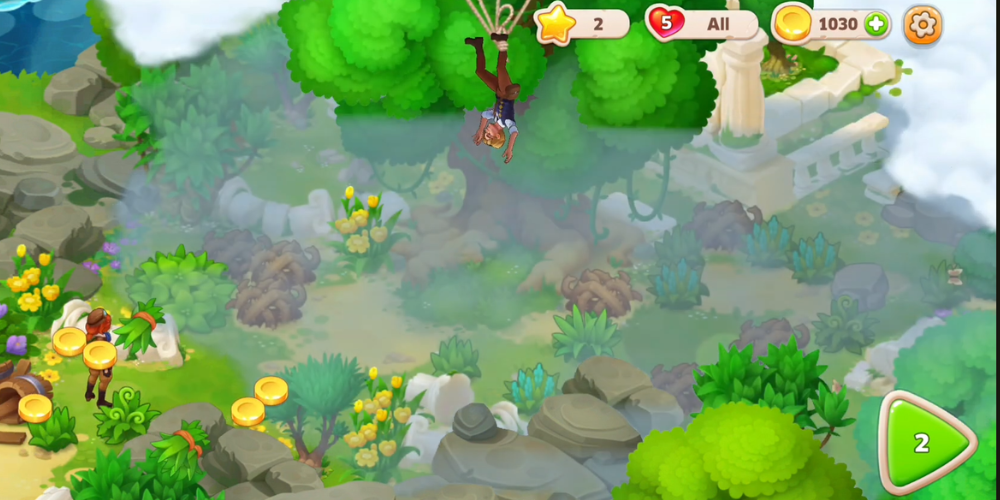A Puzzle Odyssey: Inside the World of The Witness
- Jun 07, 2024
- 541

Released in 2016, 'The Witness' is often hailed as a masterpiece of interactive entertainment. This innovative puzzle game redefined the genre with its complex designs, compelling narrative, and mesmerizing visuals. This article intends to dive deeply into the recesses of 'The Witness', underlining its design philosophy, the uniqueness of its puzzles, the enigmatic storyline, and its impact on the gaming industry.
The Design Philosophy of 'The Witness'
At the heart of 'The Witness' lies a design philosophy that dares to challenge and redefine the norms of gaming aesthetics. While the gaming industry largely gravitates towards visual extravagance, 'The Witness' takes the path less treaded, choosing essence over ostentation. This refreshingly different design philosophy steeped in minimalism sets 'The Witness' apart and adds to its intrigue and charm.
One of the most striking aspects of 'The Witness's' design philosophy is its visual aesthetics. Unlike many modern games swarming with detailed textures, high-fidelity models, and dazzling effects, 'The Witness favors a minimalist aesthetic. The game's island setting, where all the gameplay takes place, is bathed in soft, pastel hues rather than overly bright, vibrant colors. Furthermore, the island is notably devoid of unnecessary embellishments - each tree, building, and puzzle are meticulously planned, contributing to the overall visual coherence.

This austerity in design is not merely a stylistic choice. It fulfills a strategic function. By stripping down the visuals to the essentials, the game allows players to focus wholly on the complex puzzles that lie at the core of 'The Witness.' This purposeful minimalism eliminates distractions and focuses the player's attention where it is needed most - on the intricate puzzles that make up the gameplay.
Another intriguing aspect of the design philosophy of 'The Witness' touches upon its storytelling. In a departure from convention, the game avoids using explicit narratives, dialogues, or instructions to guide the players. Rather, it communicates with the player through the environment and the puzzles that populate it. This unique approach to storytelling uses visual cues and environmental design for an immersive, implicit narrative experience. Each puzzle solved, and each area explored slowly unveils the larger story, making the gameplay a constant exercise in discovery and interpretation.
Uniqueness of The Game's Puzzles

At its core, 'The Witness' is a game about learning - not through overt instructions, but through its unique puzzles. The game houses over 500 manually crafted puzzles that subvert players' expectations at every turn. Most of the puzzles revolve around interconnected panels, which evolve in complexity as the game progresses. Each area of the island has its unique puzzle mechanics that subtly impart new rules, encouraging players to think outside the box.
Decoding the Enigmatic Storyline
The narrative of 'The Witness' is as nebulous as it's intriguing. Players are stranded on a deserted island with mysterious, seemingly meaningless structures and numerous puzzles. There's no backstory or explanation for your presence; the narrative unravels itself through obscure audio logs and cryptic visual clues scattered throughout the island. The game adopts an experiential approach, leaving players to interpret the story differently.
Impact of 'The Witness' on the Gaming Industry
'The Witness' has not just been a game; it has been a landmark achievement that shaped the gaming industry's future. Its impact is deep-seated and long-lasting, with its reverberations felt in the puzzle genre and game development.

One of the significant areas where 'The Witness' had a transformative effect is the change in perception it brought about the puzzle genre. Before it, the genre was often pigeonholed as merely solving problems with a sporadic narrative filler. However, 'The Witness' broke free from this stereotype, showing that puzzles could also be an active avenue for immersive storytelling. The intricate connection between the puzzles and narrative progression of the game revolutionized how gamers and developers alike perceive and appreciate puzzle games—they became not just problem-solving ventures but carriers of profound narratives.
In addition to its role in evolving the puzzle genre, 'The Witness' profoundly influenced independent game development. Before its release, independent gaming was often viewed as secondary to big-budget, mainstream game studios. But 'The Witness,' with its captivating design and compelling narrative quality, underscored the capability of independent developers to produce rich and immersive gaming experiences—ones that could hold their own against the industry's behemoths. The game's success boosted indie games' credibility, leading to a growing sense of legitimacy and appreciation for such endeavors within the gaming industry.

Further, the innovative approach of ‘The Witness,’ from its minimalist design ethic to the experiential narrative, did not remain confined within the boundaries of the game. It rippled outwards, influencing many other games within and outside the genre. Other developers adopted and adapted different elements from 'The Witness,' whether it was the use of the environment for storytelling, the integration of narrative and puzzles, or the minimalist aesthetic—significantly impacting the flavor of games that followed.
Conclusion
'The Witness' can be considered as much an expressive art form as a compelling game. From its minimalistic visual aesthetic and cryptic narrative style to its innovative puzzles that challenge convention, it takes players on a journey of discovery and learning. Its impact has been felt across the gaming industry, changing both the perception of what a puzzle game can be and how stories are told within the medium. As testament to non-linear storytelling and problem-solving, 'The Witness' stands as a benchmark for the expansion and evolution of the gaming medium.